Eucalypt restoration improved by genomic guidelines
The Restore and Renew webtool helps NSW restoration practitioners consider genetic information and climate change when sourcing material for restoration and is helping to ensure the long-term success of eucalypt restoration projects.
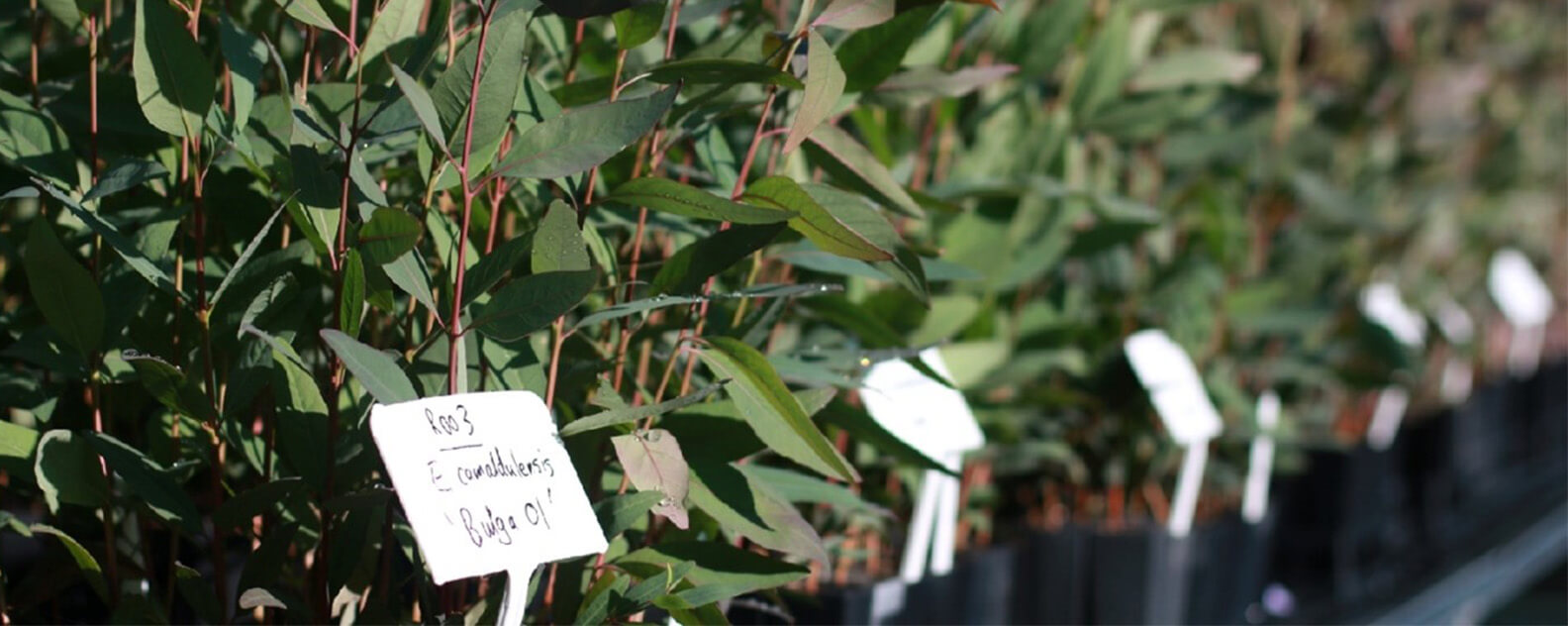
Genetically informed seed sourcing guidelines
For National Eucalyptus Day 2024, Botanic Gardens of Sydney share how the Restore and Renew webtool, produced by the Research Centre for Ecosystem Resilience (ReCER), is helping to ensure the long-term success of eucalypt restoration projects.
Over the past five years, leaf samples have been collected for genetic analysis from almost 10,000 eucalypt trees across NSW.
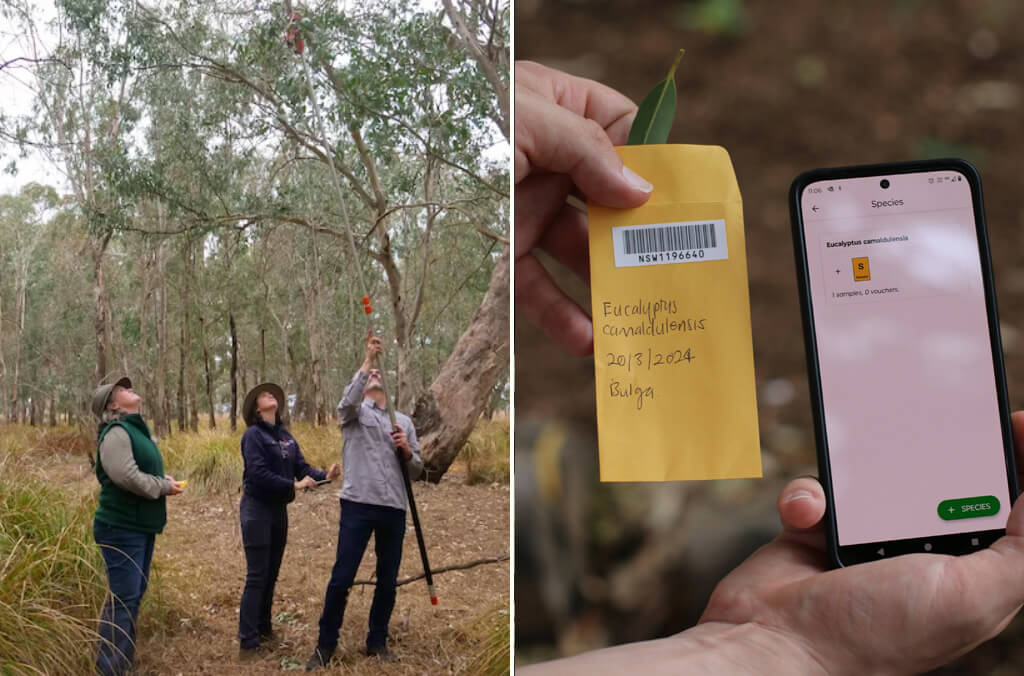
Each leaf sample collected for genetic analysis is assigned a unique barcode and a mobile phone app is used to facilitate fast and accurate collection of information about the tree. L: ABC Newcastle Jennifer Ingall
A unique barcode keeps track of each leaf sample as it goes through a process of DNA extraction, sequencing, and analysis. The resulting genetic data is combined with climatic data within the Restore and Renew webtool, which can be used by restoration practitioners to consider genetic information and climate change when sourcing seed and other material for restoration.
Currently, 19 eucalypt species (with more to come) are available for seed sourcing guidance on the webtool.*
Genetics is important to eucalypt restoration
Genetic information is an important consideration when restoring native vegetation and can help ensure seed and other propagules are sourced from appropriate locations and are sufficiently genetically diverse. Seed sourced from inappropriate populations, or with too little genetic diversity, may result in a restored population that has low reproductive fitness and an inability to adapt to environmental change. In other words, lots of trees may go in the ground, but they may fail to reproduce, or they may be less likely to cope with diseases or changing climatic conditions.
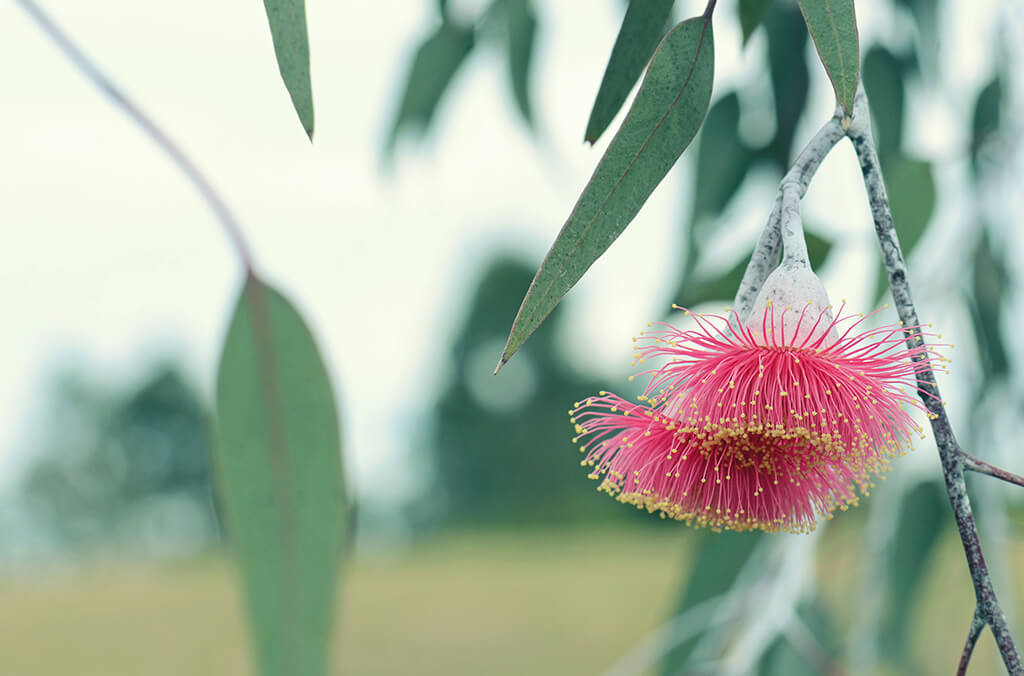
Eucalypt flowers are pollinated when insects, birds or mammals transfer pollen from one flower to another.
Genetic information is highly relevant to eucalypt restoration. The thousands of genotyped samples gathered by ReCER from across south-eastern Australia indicate that healthy natural populations of eucalypts have high genetic diversity, with most mature individuals resulting from outcrossed mating (i.e. the pollination of one tree by another unrelated tree). However, genetic screening of seedlings indicate that many eucalypts can inbreed (i.e. pollination of a tree by itself or by a close relative). The absence of these inbred individuals among adult plants in natural populations suggests genetically diverse outcrossed trees have better survival and reproduction rates than inbred trees.
For restoration projects to succeed in the long-term, we should aim to replicate the high genetic diversity of natural populations to avoid the detrimental effects of low genetic diversity. In other words, we should avoid sourcing seed from only one or few trees or from small populations and should maximise the number of trees seed are sourced from.
“Our genomic studies show, that in many natural eucalypt populations, the bias toward outcrossed individuals is so strong that isolated individuals will often give rise to hybrid offspring (i.e., seed arising from pollen from other species) due to the low success rates of inbred seed and seedlings," says Maurizio Rossetto.
"If seed used in restoration are sourced from one or few closely related trees, planted trees will have limited capacity of recruiting new generations and may produce large quantities of hybrid seed.” - Professor Maurizio Rossetto.
Restoring River Red Gum in the Hunter Valley
One of the 19 Eucalypt taxa included in the Restore and Renew webtool is Eucalyptus camaldulensis subsp. camaldulensis, known commonly as the River Red Gum.
ABC Landline reported on the restoration of this species in the Hunter Valley, showing how genetic information is helping to ensure the long-term success of a eucalypt restoration project.
ABC Landline, 23 October 2023, Protecting the Hunter’s River Red Gums. Reporter: Romy Stevens.
Use the Restore and Renew webtool
NSW restoration practitioners and planners can use the Restore and Renew webtool to consider genetics and climate change when planning a native vegetation restoration project.
Find the tool here and learn more about how to use it here.
Additional species are uploaded to the tool regularly, so make sure to re-visit, as site-specific lists of species we have state-wide genetic data for is likely to grow.
*As of March 2024, genetically informed seed collection guidelines are available in the Restore and Renew webtool for the following eucalypt taxa. Angophora costata, Angophora floribunda, Angophora hispida, Corymbia eximia, Corymbia gummifera, Eucalyptus albens, Eucalyptus baueriana, Eucalyptus blakelyi, Eucalyptus bridgesiana, Eucalyptus camaldulensis subspecies camaldulensis, Eucalyptus cunninghamii, Eucalyptus goniocalyx, Eucalyptus fibrosa, Eucalyptus melliodora, Eucalyptus piperita, Eucalyptus polyanthemos, Eucalyptus populnea, Eucalyptus punctata, Eucalyptus sieberi.
Related stories
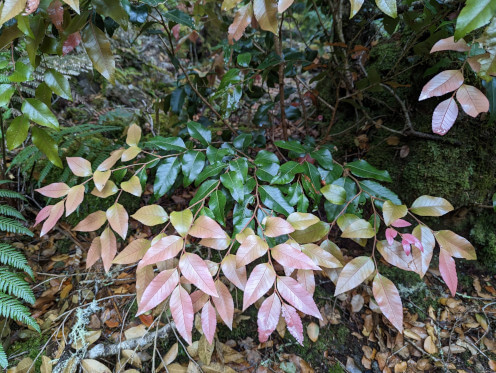
For the team at the Research Centre for Ecosystem Resilience (ReCER), a request from the Blue Mountains Botanic Garden to design a hedge of the towering Nothofagus moorei, or Antarctic beech, sparked a unique collaboration between science and horticulture.
In the lower Hunter Valley, a new nature reserve named Tiraki – Wonnarua for ironbark – has become a sanctuary for one of Australia’s rarest plants.
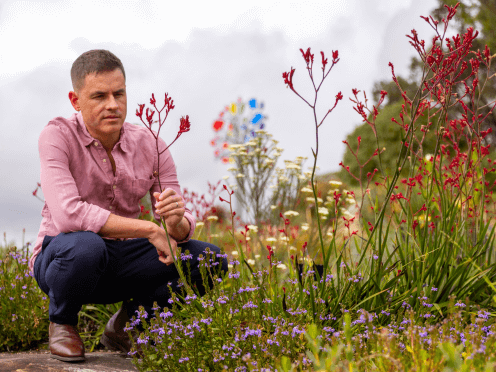
In this new episode of What the Flora!? discover why this world-first global ‘Tree of Life’ study is a new milestone in understanding the evolutionary history of flowering plants.